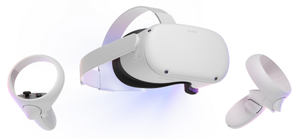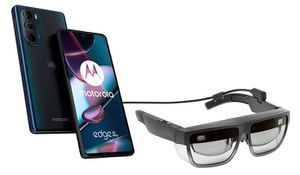From Immersive Visualization Lab Wiki
CSE165: 3D User Interaction
Description
|
From video games to mobile augmented reality, 3D interaction is everywhere. But simply choosing to use 3D input or 3D displays isn't enough: 3D user interfaces (3D UIs) must be carefully designed for optimal user experience. The goal of this course is to cover the full spectrum of emerging applications for 3D UIs, and present an array of pioneering techniques and technologies. We will cover theoretical foundations, analysis of devices and techniques, empirically validated design guidelines, and illustrate key concepts with running case studies. We will be doing homework assignments using the Meta Quest 2 and the Lenovo ThinkReality A3 headsets.

|

|
| Oculus Quest 2
|
Lenovo A3
|
Goals
By the end of the quarter, students will gain an understanding in:
- Essentials of HCI and human factors centered around 3D UIs
- How 3D UIs have evolved, and the "hard problems" that remain
- 3D UIs in console gaming, VR, augmented reality (AR), mobile/wearable computers, and remote collaboration
- How 3D input/output enables users to perceive and act much as they do in the physical world
- 3D output devices, including visual, auditory, haptic, and tactile displays
- 3D input devices, including traditional, special purpose, and direct human input
- 3D interaction techniques for common tasks such as selection, manipulation, navigation, and system control
- Strategies for designing and developing 3D UIs
- Evaluating existing 3D UIs, and previewing their future
Prerequisites
- CSE167 (Introduction to Computer Graphics) or equivalent course or experience
- Experience with graphics programming, or experience with Unity 3D, Unreal Engine or Lumberyard
- Linear algebra and coordinate systems
Format
- Instructors: Drs. Nadir Weibel and Jürgen Schulze
- Number of Units: 4
- Lectures: Tuesday and Thursday, 2:00-3:20pm in EBU3b, room B210
|